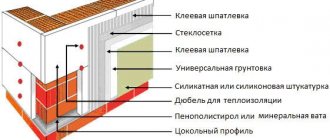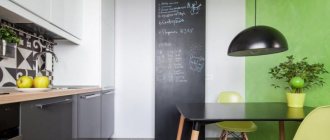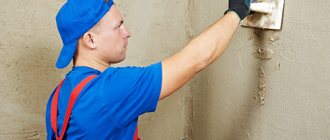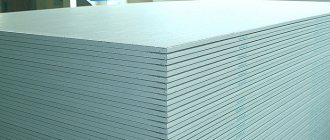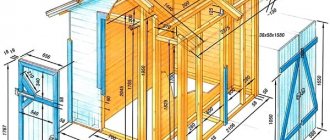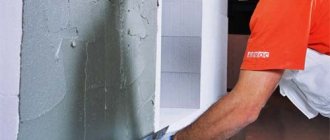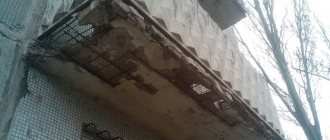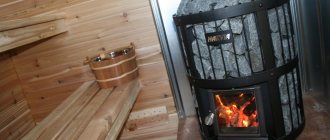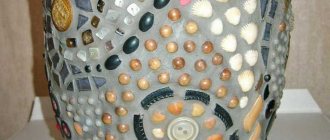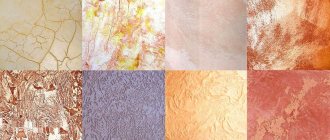Structural plaster is considered an inexpensive and original facing material. It is distinguished by excellent performance characteristics, good adhesion to surfaces, a variety of textures, a rich color palette, and an aesthetic appearance. This material is a heterogeneous mixture consisting of many components and is used to create decorative wall coverings in living rooms, kitchens, bathrooms, toilets, and balconies.
Properties of the structural mixture
In addition to highly artistic qualities, such decorative coatings are distinguished by such features as:
- strength;
- the ability to mask minor surface imperfections;
- no pungent odor;
- immunity to ultraviolet radiation;
- ability to pass air;
- water resistance;
- wear resistance;
- plastic;
- non-susceptibility to the formation of mold and any types of microorganisms;
- vapor permeability;
- resistance to temperature changes;
- ease of care;
- suitability for the use of aggressive detergents;
- long service life.
Depending on the type of structural mixture, surfaces retain their characteristics and impeccable visual qualities from 10 to 25 years.
Types of mixtures
Basically, such compositions differ in the size of the filler grain, which forms the desired texture. The filler can be small grains of various natural materials, such as marble or quartz, mica, wood fibers, and so on. However, no less important is the binder, which gives the mixture the desired properties. Basically, structural plaster for walls is purchased ready-made and can be made on the basis of:
- Acrylic.
- Latex.
- Potassium silicate.
- Lime or cement.
Depending on the type of composition chosen, it will have different characteristics. This is a very important point - some varieties are more suitable for dry rooms, while others are excellent at resisting water. In addition, there is another component - a diluent. Typically, this is done using chemical solvents or water.
Composition of structural type plaster
Structural decorative plaster is characterized by a variety of types and textures of finishing, which is achieved due to the small fractions included in the composition:
- marble or granite chips;
- wood or textile fiber;
- fine- and coarse-grained sand;
- fragments of river and sea shells;
- cellulose;
- foil;
- crushed fragments of mica, quartz, perlite.
The size of the fractions is directly related to the material consumption, which varies from 1 to 3 kg per 1 square meter. m.
Variety of textures
Depending on the plaster filler and application method, the surface may look like:
- sand wall or dunes;
- orange peel;
- luxury tanned or cracked leather;
- fish scales;
- various reliefs;
- reptile skin;
- smooth or fleecy fabric;
- semi-antique;
- cracked stone surface;
- precious stones.
USEFUL INFORMATION: What is better and cheaper, to plaster the walls or cover them with plasterboard?
Particular sophistication of the interior is provided by bas-reliefs that can be applied to a dried plastered surface.
Types of material
There are the following options for structural plaster for interior work, the composition of which determines the price:
- Mineral, which is a dry white substance based on lime and cement, is the most budget-friendly type of coating. Immediately before application, dilute with water in the proportion specified in the instructions for use and stir with a construction mixer or drill with a whisk attachment. At the same time, you should introduce color or paint the surface in the desired color after the layer has dried.
Mineral plaster is environmentally friendly, fireproof, resistant to mold and microorganisms, but is not elastic and may develop cracks over time.
- A synthetic mixture for walls based on acrylic resin is elastic, durable, and environmentally friendly. Sold ready for use.
- Silicone, made on the basis of polymer compounds. It has excellent performance characteristics, such as water resistance, ductility, strength, durability, vapor permeability, resistance to ultraviolet radiation, wear resistance, ease of application and maintenance.
The silicone compound is sold as a tinted, ready-to-use mixture and is more expensive than other types of finishing materials. However, the high price is paid off by long service life (more than 20 years) and impeccable visual qualities.
Structural plaster - material features
First, let's find out what structural plaster is. Along with textured and textured, it is a type of relief plaster. Each type of relief plaster has a set of positive characteristics:
- long service life,
- ease of cleaning and maintenance,
- resistance to mechanical damage,
- it does not change its shade under the influence of ultraviolet radiation,
- its texture allows you to hide small defects in the walls,
- it is permeable to vapors, but is not afraid of moisture,
- it is environmentally friendly, can be used in different temperature conditions, from - 50 to + 75 degrees,
- the variety of its shades allows you to make bold experiments and create uniquely beautiful room design options.
Using decorative structural plaster, you can imitate the cut surface of wood or tree bark, torn stone, snake skin, etc. Stores sell a ready-to-use mixture, packaged in 15 or 20 liter buckets; it should not be mixed with anything other than a coloring pigment. The plaster has the appearance of a white thick mass, characterized by plasticity and viscosity. It is applied to the walls with a spray or spatula, and treated with special tools to give it a decorative look.
Although there are many interesting products on the finishing materials market, buyers often prefer decorative plasters - materials that have an attractive appearance, are practical to use and easy to install.
Tools
Before you begin finishing, you need to check the availability of the necessary equipment. The missing ones should be purchased. You will need:
- construction plumb line;
- level;
- rule;
- plaster scoop;
- trowel for finishing work;
- spatulas - narrow and wide;
- construction hammer;
- pigments or acrylic dyes;
- hard brushes with bristles of different lengths to create texture;
- textured roller;
- roller with a pattern;
- foam and rubber sponge;
- spray gun or texture plaster gun if large areas are being processed.
Preliminary surface preparation
Preparation for applying the structural mixture for interior wall decoration does not take much time. Enough:
- remove the old coating by beating off particularly strong fragments with a hammer;
- using putty and a file, remove noticeable defects - cracks, bulges, irregularities;
- Thoroughly clean the surfaces with a damp cloth (possibly using detergents) to remove dirt and dust. Grease stains are removed using acetone and degreasing compounds;
- Apply a layer of primer to the walls.
Note! There is no point in achieving a perfectly flat surface, since a decorative layer of plaster will mask minor imperfections.
Advantages of structural plaster
Structural plaster has gained its popularity due to its wide range of applications. They, in turn, are based on properties that allow them to obtain serious advantages over other finishing materials. The main properties of this finishing material are:
- the ability to use almost any material as a base: concrete, brick, plasterboard, stone, metal, wood, etc.;
- allows you to hide unevenness and other defects of the surfaces being finished;
- resistance to mechanical stress. Resistant to chips, scratches and impact contacts;
- waterproof, allowing wet cleaning, including the use of detergents;
- high heat resistance, which allows this plaster to be used both for interior decoration and for facade work. Temperature range of use from -50 to +75 degrees;
- due to its plasticity and elasticity, it allows you to create quite complex finishing structures;
- the porous structure allows the interior to “breathe”;
- tolerates repeated repainting well during its entire service life;
- has a long service life.
Decorative plaster for interior wall decoration
Sequence of work
Before you start plastering, you need to add pigment to the mixture and mix thoroughly or use a white composition.
Silicone dye plaster has the advantage of faster and more efficient finishing.
- The ready-to-use tinted mixture should be applied from above, along the ceiling line or slightly below. The plaster is sprayed or scooped onto the walls and spread with a trowel or spatula from top to bottom.
- Use a narrow spatula to decorate the corners and cornice.
- Leveling the base layer should be done with smooth movements from top to bottom, without pressure.
- After applying the first layer, it is necessary to stop working for some time - from several hours to two days - until the mixture sets.
- The second layer is applied to the dried surface and leveled with a textured or patterned roller. You can create texture with arbitrary movements - wavy, broken, beveled lines, circular and intermittent.
USEFUL INFORMATION: Bosch GSR 1440-LI screwdriver: review and reviews
Curly flows and drips, patterns, and abstract drawings look impressive. A surface with small or large fractions of marble chips or perlite looks original. To create additional effects, brushes with stiff bristles are used, with which you can draw furrows, and a foam sponge for scuffs. Several more methods are presented in the next photo.
- Plaster niches and recesses in the walls.
All kinds of designs created using structural material are extremely popular - real and fantastic colors, hieroglyphs, scatterings of stars. For such images, you need to cut out the desired figures on a piece of rubber and attach it to the roller.
Application of structural plaster
- First you need to prepare the walls. The surface must be clean and dry, so we remove old finishing materials: wallpaper, paint, etc. There is no need to perfectly level the wall; plaster will do it for us. The main thing is the absence of large differences and depressions.
- Then we apply primer to the walls. This is done in order to strengthen the surface and protect against swelling and mold.
- Is the primer dry? Great, let's start applying. There are many options and techniques for applying the decorative mixture. They all depend only on your fantasies. For example, to get the effect of a scratched wall, you need to buy fine-grained plaster with the addition of large granules, and use a textured roller when applying it. And if you want to achieve the effect of a sea breeze, you should use coarse-grained plaster, and apply it using a spatula in a circular motion.
Finishing
Depending on the weather, temperature and humidity in the apartment, and the thickness of the applied layers, the structural mixture can dry for about two weeks. After which you should carefully remove dust from all surfaces with a soft cloth, treat with fine sandpaper, clean again and begin applying paint if a white composition was used.
You can avoid disturbing the texture when painting using a rubber sponge soaked in a coloring compound.
Dried walls are covered with a layer of wax.
Decorating walls with your own hands using structural plaster is especially attractive for creative individuals with extraordinary artistic imagination and a penchant for experimentation.
You can watch a specialist apply the plaster in the following video.
Advantages of structural plaster
- Can be applied to almost any surface: cement, brick, wood, metal, drywall, etc. Used for both exterior and interior decoration;
- Hides small surface defects: cracks, differences, old paint;
- It is resistant to mechanical damage and has high impact resistance;
- Waterproof: the plastered wall is easy to clean with ordinary detergents;
- Resistance to temperature changes from -45 to +70 degrees;
- Allows you to create original relief solutions;
- The porous structure allows the wall to “breathe”;
- Relatively low cost.

